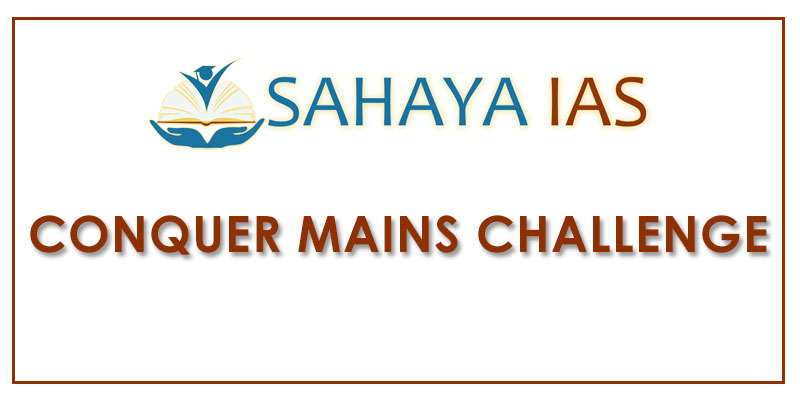Paper 1:
Women labour force participation is declining with rising income in the country. Discuss the measures needed to arrest this trend and improve their participation?
Her rights: Related to participation of women in workforce.
Key points:
- Amendments to Kerala Shops and Establishments Act have been proposed. Amendments seek to recognise gender dimension in work spaces and labour laws among others.
- The credit for forcing the Kerala government to amend the concerned Act goes to a new generation of women labour leaders, who have been struggling to get the state and the male-dominated leadership of trade unions recognise the gender dimension in labour rights.
- Ironically, the recognition of the gender dimension in labour rights comes at a time when Kerala is reporting a decline in women’s work participation.
- The changes to the Kerala Shops and Establishments Act is a step that recognises its presence, and acknowledges the rights of its constituents.
What to study? Recent amendments to Kerala Shops and Establishments Act- significance, need and what more needs to be done to increase the participation of women in the workforce at all levels.
Source:The Indian Express
In several ways, the life and work of Swami Vivekananda mark the historical process of India rediscovering herself in modern times. Comment.
The radical monk: Related to the thoughts and views of Vivekananda.
Key facts:
- Swami Vivekananda’s birthday is celebrated as National Youth Day in India. However, Vivekananda needs to be understood more meaningfully. His engaged religiosity can help create a spiritually enriched, egalitarian society.
- He urged to alter the discourse of colonial hierarchy, and assert the heritage of India — “the mother of religions”, and why we should feel “proud” to belong to “a nation that has sheltered the persecuted and the refugees of all religions and all nations of the earth”.
- India has strength as well, and India is still living because she has her own quota yet to give to the general store of the world’s civilization”.
What to study? India as viewed by Swami Vivekananda, his thoughts and what needs to be done to get India there.
Source:The Indian Express
Nigeria has overtaken India with the largest number of extreme poor at 87 million poor earlier this year. India is now officially a middle- income country. The reduction in extreme poverty has several implications. Discuss
Key facts:
- The World Bank defines a person as extremely poor if she is living on less than 1.90 international dollars a day, which are adjusted for inflation as well as price differences between countries.
- India is now a middle-income country. The reduction in extreme poverty—and the debates should only be about its extent—has several implications. The political, policy and administrative systems have to adjust to the new realities.
What to study? Poverty- definition and numbers, recent reduction in numbers, new responsibilities of the government.
Source:Livemint
Paper 2:
Is the role of Union Public Services Commission (UPSC)in the appointment ofDirector General of Police (DGP) justified? comment on the police reforms necessary to make country’s policing more efficient and people- friendly.
Key points:
- By giving the Union Public Services Commission (UPSC) a say in the appointment of Director General of Police (DGP) in states, the Supreme Court has taken a simplistic approach to the vexed issue of police reforms.
- The order is actually a reiteration of a directive issued by the court in its 2006 verdict in Prakash Singh vs Union of India.
- However, by continuing to allow UPSC a say in the selection of DGPs in states, SC has hurt principles of federalism.
- The judgment, in Prakash Singh Case, had enjoined every state to constitute a State Security Commission (SSC) “to ensure that the state government does not exercise unwarranted influence or pressure on the state police”.
- It is being said that by reiterating that the UPSC is the custodian of this process, the SC has not only lost an opportunity to improve a landmark verdict, it has not furthered the cause of autonomy for the police forces.
What to study? Police reforms- need, challenges and SC’s observations, reports of various committees.
Source: The Indian Express
Paper 3:
The formal sector stands at the apex of India’s labour market pyramid, agriculture being at the bottom, employing 50% of the workforce.What do you understand by informal employment? How is it measured and what is its nature in India? Critically discuss.
The paradox of job growth: Related to employment generation and challenges.
Key points:
- Between September 2017 and April 2018, says a CSO media release last week titled “Payroll Reporting in India: An Employment Perspective – April 2018”, the economy added 4.1 million new jobs in the formal sector.
- However, the projections may not be comprehensive.Besides missing informal sector, there is over-estimation of output growth. NITI Aayog and official economists have also put out similar estimates since early this year, inviting widespread scepticism among knowledgeable people.
- The formal sector stands at the apex of India’s labour market pyramid, agriculture being at the bottom, employing 50% of the workforce. The remaining workers are in the non-farm informal sector, spread across rural and urban areas.
What to study? Formal and Informal employment, their share in GDP, government initiatives to secure livelihoods of people in the informal sector.
Source: The Hindu
Click Here -To Proceed to the first ever digital Civil Services Mains test experience with our innovative Conquer Mains Challenge

Comments (0)